It feels like the wait for Dying Light 2 Stay Human has been longer than it’s actually been. The sequel to the 2015 smash hit was only announced back in 2018, but the title’s rocky development has made the last four years feel even more dragged out. Between the multiple release date delays and dismissal of lead writer Chris Avellone due to misconduct allegations, it’s been a busy development cycle nonetheless. Alas, here we are in February 2022, though, and the sequel has finally arrived. After all of the controversy and headlines, though, does it live up to the hype?
Dying Light 2 builds off of the pillars that made the original such a fan favorite. The impressive parkour movement system has been greatly improved, the day-night cycle is still a major part of the game, and the brutal, but simple, combat engine has been expanded. Another area the sequel has built upon is the narrative, which was kind of a non-factor in the first game. There is now a greater emphasis on the decisions you make during the campaign. These not only affect which characters you build relations with but also have an effect on the world around you. Besides making the story much more interesting, these moments give the universe far more personality and life.
In order to improve the parkour system, Techland basically went ahead and completely rebuilt the engine from the ground up. For the sequel, the studio has given players a plethora of movement abilities that take full advantage of the 3000+ new animations they cooked up. Not everything is available from the start, however. Certain gear, such as the paraglider, unlock as you work your way through the main campaign. Specialized abilities such as sliding and wall-running also need to be unlocked via the skill tree. By locking some of these skills behind a gate, it can make the opening few hours feel limited, but knowing that you can really maximize your parkour abilities at least gives you something to drive towards.
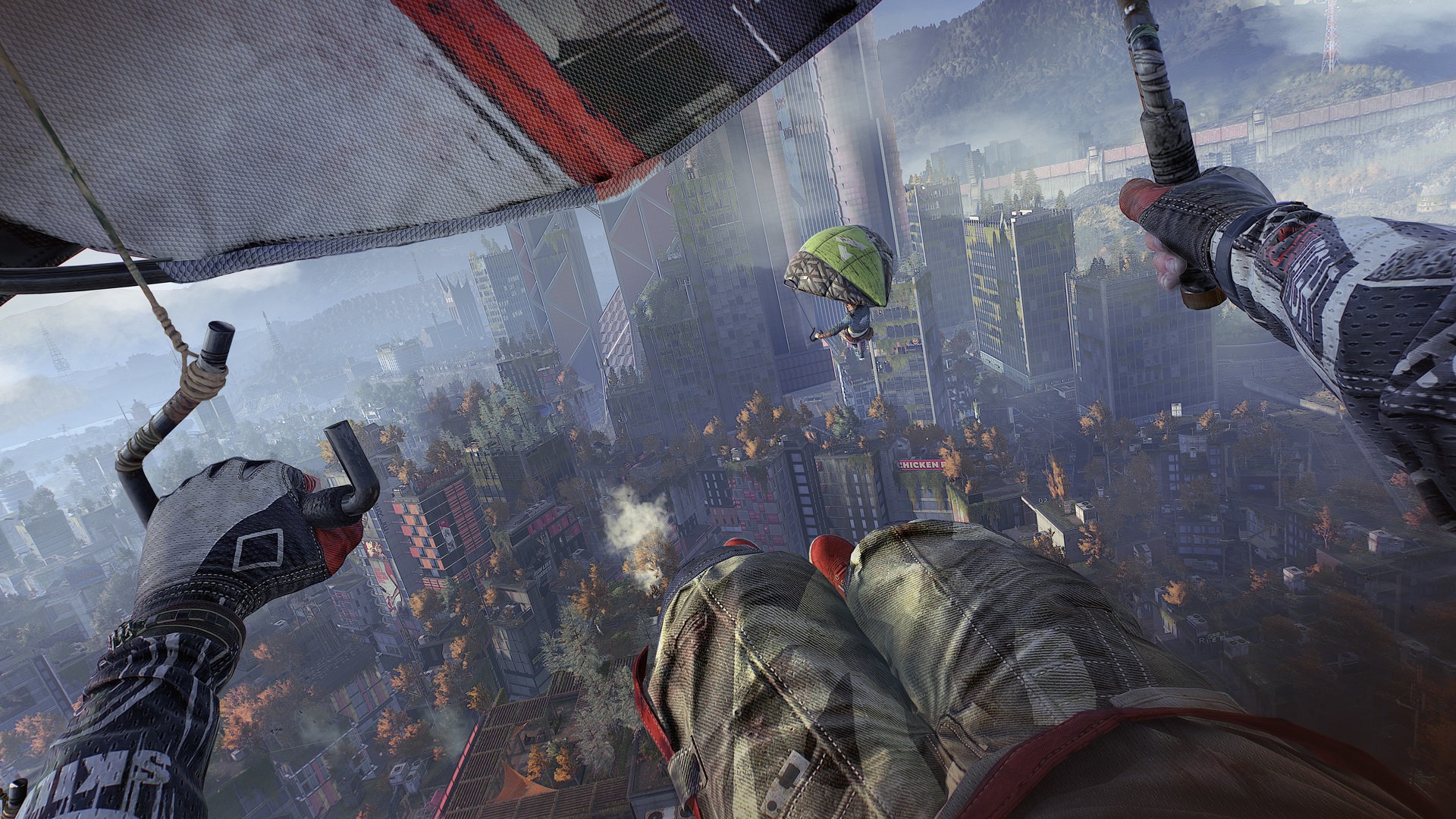
For the most part, I think Dying Light 2 is fantastic when it comes to movement. I don’t think any other studio has come as close to perfecting first-person movement as Techland has here. The movement is fast and fluid from the start and only gets better once you tap into the full arsenal of abilities available. Whether I was bounding from rooftop to rooftop to get to a new objective, or delicately maneuvering through an infected zone, I almost always felt like I was in full control of my movements. There are still moments, though, where protagonist Aiden wouldn’t grab onto something it seems like he should have been able to. Or times when I got caught up on something that probably could have been ignored, such as an errant ledge or angle. Some of that could just be a factor of your regular open-world jank I suppose. Regardless, the game has managed to significantly improve upon arguably the best aspect of the first title, which is a major boon for the sequel.
The revamped parkour mechanics also play a major role in the combat now. The first Dying Light featured a combat system that was serviceable, but rarely felt like a solid option. Unless forced to, it always made sense to me to avoid as much conflict as I could. For the sequel, Techland decided to make fighting not only feel better but also more creative. For example, you can now use enemies as springboards for attacking other enemies. By parrying or perfectly timing an attack, you can hop off one baddie to deliver a devastating attack to another nearby foe. As with movement abilities, additional attacks can be unlocked through filling out the skill tree.
While having more movement-based attacks is a nice feature, the most important aspect of Dying Light 2‘s combat still belongs to the weapons. Various improvised armaments such as axes, table legs, and guitar necks can either be found littered throughout the vast world or purchased from vendors. There has been a greater emphasis on making each weapon feel unique from the other. Specifically, attention has been placed on the weight of these tools. A large battleax carries much more heft than a simple pipe, and the game makes you feel that weight. Modifying weapons with blueprints makes a return for the sequel as well. It may not be realistic to outfit your saw with a poison modifier, but I can’t deny that it feels good to brutalize a large infected with it.
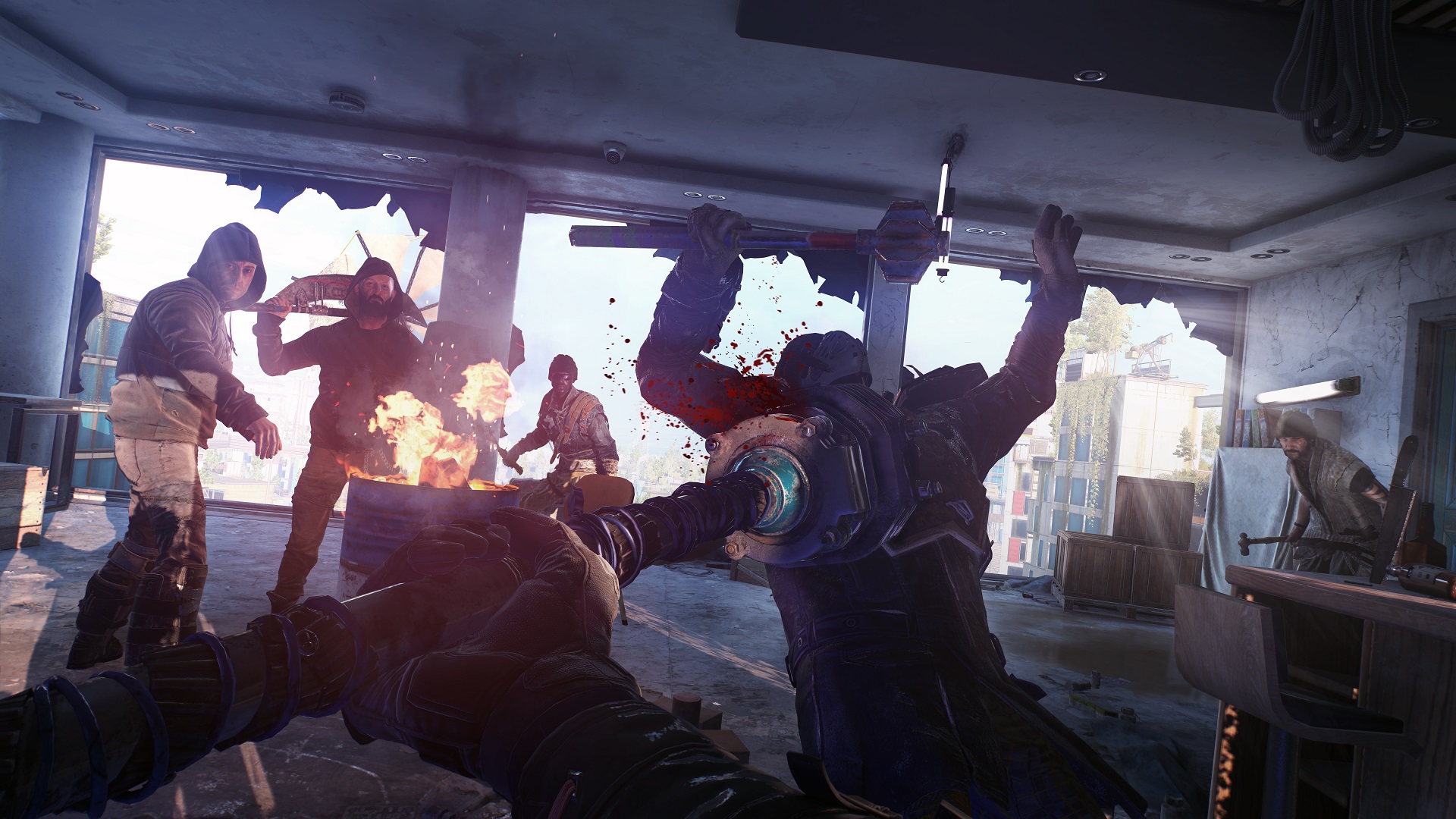
Even with all of the improvements, I’m still not sure I would refer to the combat as great. It feels better than the engine used in the original, don’t get me wrong. It’s certainly more forgiving. But it’s still a little too sloppy for me to properly enjoy. Anytime I was forced into an encounter, I found myself wishing I was doing something more enjoyable, such as exploring or puzzle solving. The parkour-based abilities are cool in theory but can be tough to use in practice. In particular, I found that using them in smaller environments was more hassle than it was worth. I wanted to enjoy it more than I did, as it does have its shining moments. It just doesn’t come together in a way that feels anything above fine.
The day-night cycle was one of the most popular aspects of the original Dying Light, and it returns here in a slightly tweaked fashion. As with before, the infected are a little more docile and indifferent towards you during the daytime. This makes getting around much easier. However, there are certain areas that will be more difficult to explore due to infected squatting there during the day. Once dusk hits, the streets become much more dangerous. Regular infected are faster, stronger, and more aware. There is also a greater presence of stronger variants, such as Howlers, Bolters, and Volatiles. Going out at night is slightly less challenging than before, which I approve of, but others may dislike some of the edge being softened. It makes exploring those buildings that were too full during the day and completing night-time-specific missions less daunting.
You’ll need to spend a good amount of time out at night as well, as the citizens of Dying Light 2 love making you do so. Taking place 20 years after the events of the original, things have only gotten worse out there. The infection continues to spread, and society still hasn’t fully adapted. As pilgrim Aiden Caldwell, you only care about one thing, though: tracking down your sister Mia. His search for information has led him to Old Villedor, one of the few remaining cities. In order to get to where he needs to go, he’ll need to work with the two different groups fighting for control of the city. The Peacekeepers, who have helped bring order to the city, and the citizens of the Bazaar, who want to break free from authoritarian rule. Both sides are claiming they can help, but can either really be trusted? Your decisions will change the landscape of Old Villedor forever.
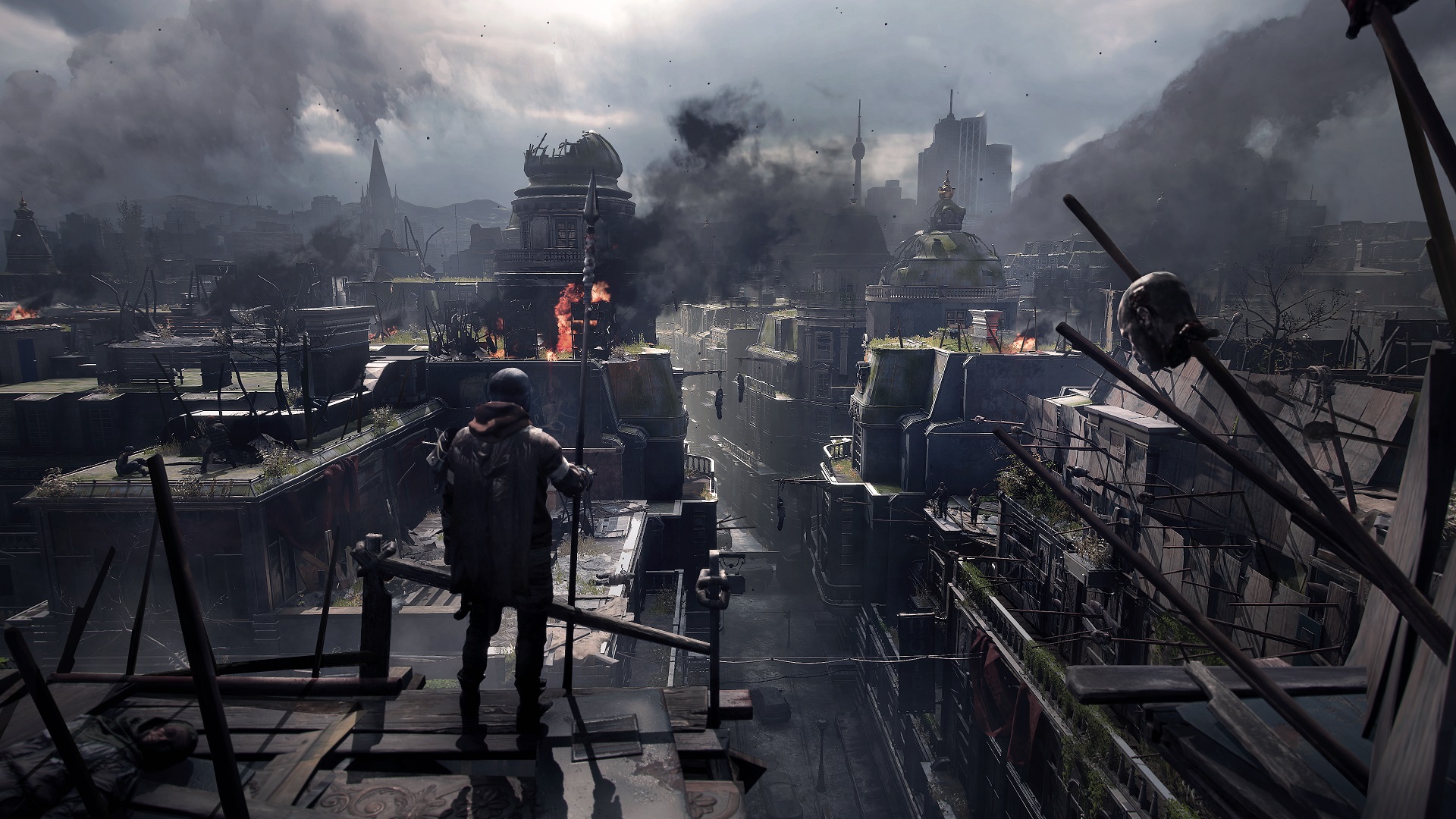
Before his dismissal, Chris Avellone’s involvement was a major selling point for the story. I’m not sure how much the controversy surrounding him (and his subsequent dismissal) affected the narrative, but I think it turned out pretty well all things considered. The friendly and hostile faces you meet along your journey are well developed, and I was interested in getting to know more about their role in the world. Getting the full picture would probably take a second playthrough, though, as it does seem like the story branches in significant ways depending on the decisions you make. Techland has done an excellent job of making the choices you make feel weighty and important. This is a huge selling point for the title, and the team stuck the landing on it.
If there’s one area the narrative could have been improved, though, it has to do with Aiden himself. Simply put, I didn’t really find him to be engaging, and his writing feels inconsistent at points. There were times when the decisions I made didn’t line up with the dialogue that followed. For example, in one early quest, I ratted on a smuggler that betrayed their boss. Upon hearing that the man I ratted out got appropriately punished, Aiden acted with severe indignation. Did he not expect the criminal to be punished? This also comes after him generally being wary of getting involved with the citizens of the Bazaar. There are other moments similar to this where the script doesn’t entirely line up with the choices you may have made.
Outside of the main campaign, there are a ton of activities for you to partake in. Countless citizens of The City need help, and as a pilgrim just trying to get by, you’re more than willing to take on the job. One quest may have you breaking into a water tower to rescue a trapped child, while another has you helping a man with his post-apocalyptic dating service. There’s a solid amount of variety to these missions, and I enjoyed gaining more insight into the universe of Dying Light. Outside of side-missions, there are a handful of other distractions such as time trials, exploration missions, and battles against specialized infected. There are times when the map veers into Ubisoft territory with the number of activities actively displayed, but it’s not like you need to complete every one. Most of them are there for those who want to wring as much out of the sequel as they possibly can.
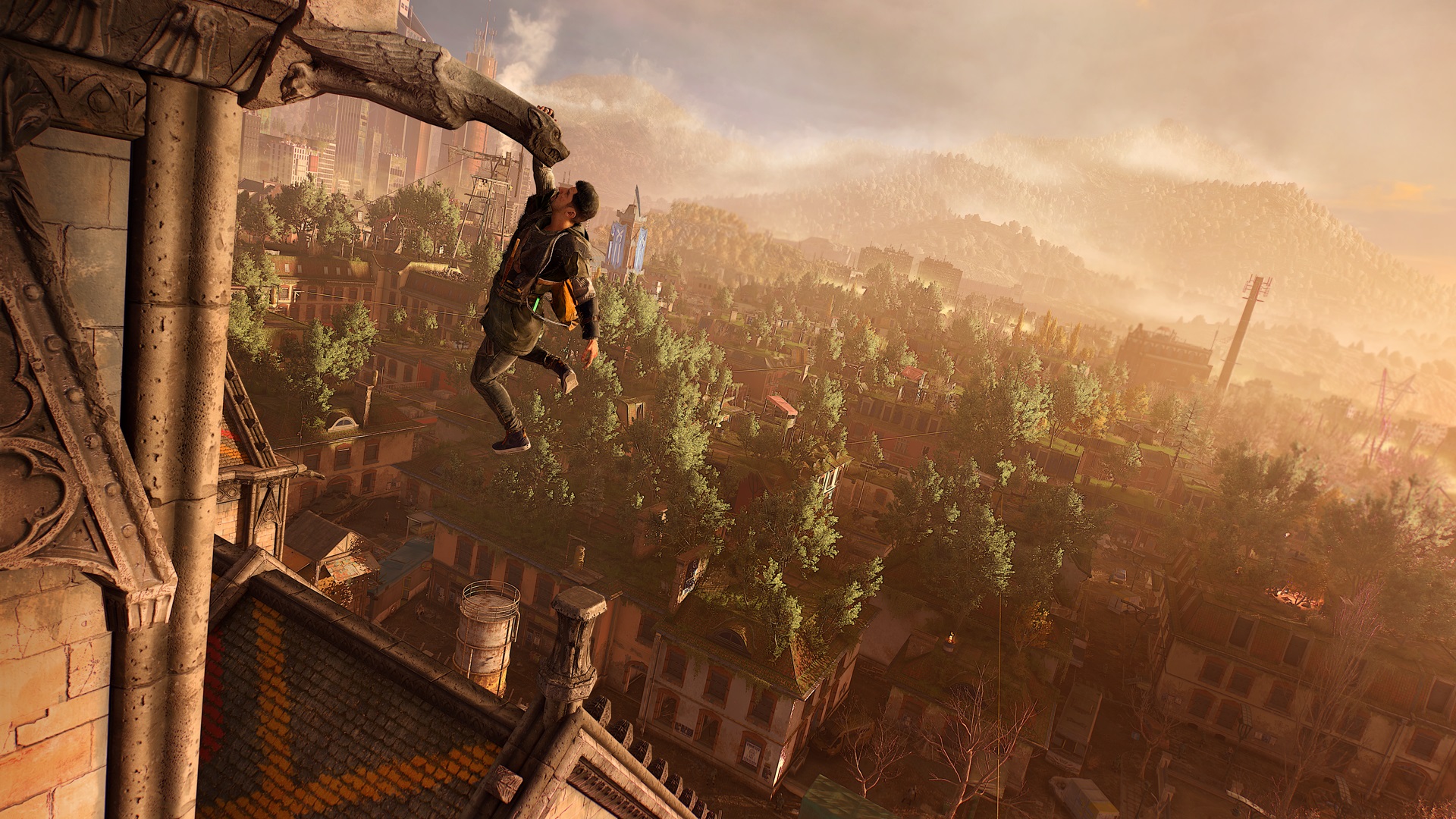
One potentially controversial change to the formula is that you can no longer just camp out in one location. Aiden is a man with many talents, and how he got those skills gets explained over time. However, early on in the game, he does get infected but is (thankfully) saved by a local. In order to stave off his infection, he needs to avoid staying in the shadows for too long. A meter on-screen will tick down if you are not out in the sunlight or exposed to UV light. There are ways to stave the infection off if you are stuck inside, but resources are scarce. This adds an extra layer of challenge that sometimes feels frustrating to deal with but always leads to intense moments.
Playing on the PlayStation 5, Dying Light 2 is a looker, despite of all the grim visuals you come across. The infected are gross to look at, with the specialized classes looking particularly gruesome. The human characters look good as well. They are a bit stylized, so they don’t look entirely realistic, but they animate well and carry plenty of detail. I love the world of the game, though, particularly the verticality of it. It’s when you’re traversing the city’s rooftops where you get to see how society has been rebuilding. Lush gardens and burgeoning camps can be found across the rooftops of Old Villedor. With the infected roaming the ground, the streets have appropriately been left to rot. There’s a strong contrast between Old Villedor and Central Loop — one of the other main areas you travel to. The former has a strong medieval vibe, despite plenty of modern buildings still being around, while the latter is much more industrial in its design.
There are moments when the reach of Dying Light 2 Stay Human sometimes exceeds its grasp. The narrative is deeply layered and engaging, but suffers from a bland lead. The combat has been improved and offers substantial variety, but still feels a little too sloppy. However, the many ways in which the sequel improves upon the original ultimately make it worth checking out. The parkour system is better than ever, and Techland’s carefully crafted open world offers plenty to mess around with. Rocky development cycles can often lead to disappointing end results, but that is not the case for this highly-anticipated sequel.
This review was based on the PlayStation 5 version of the game. A copy was provided to us by Techland.


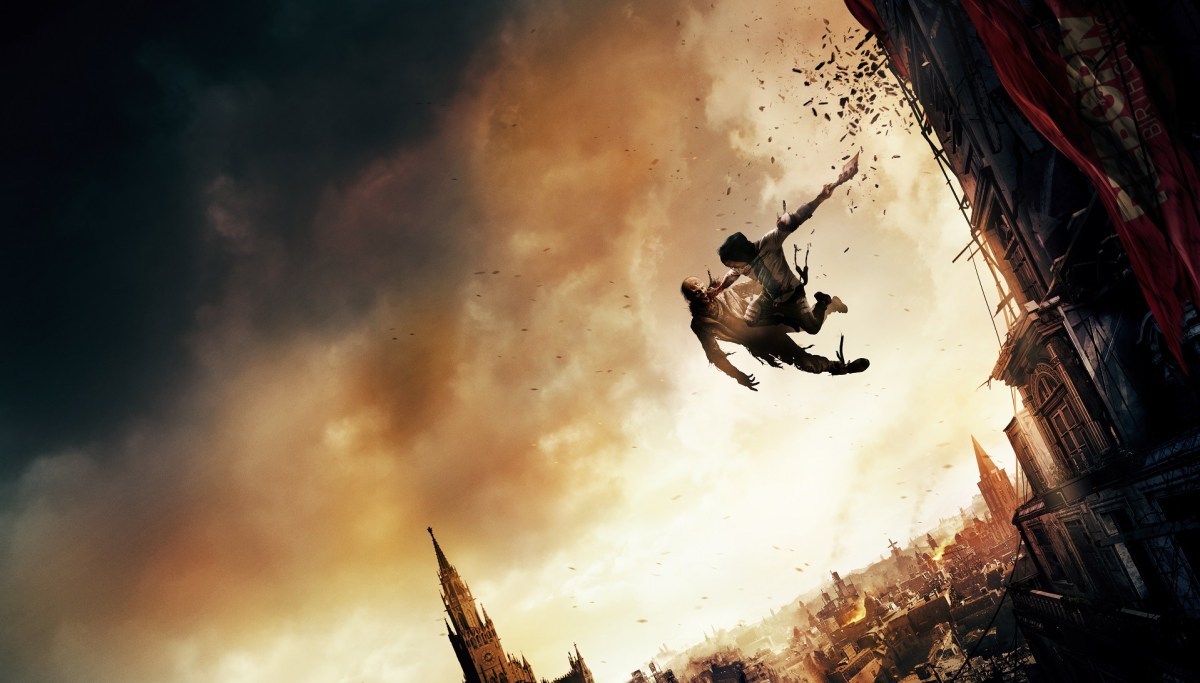
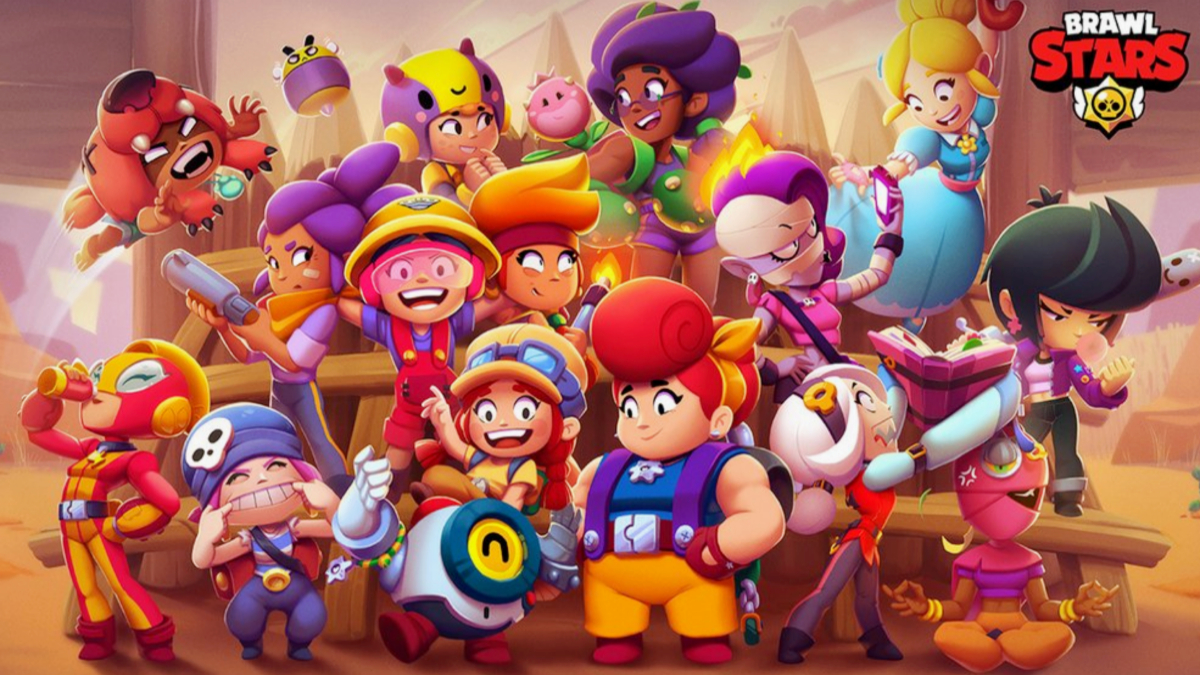
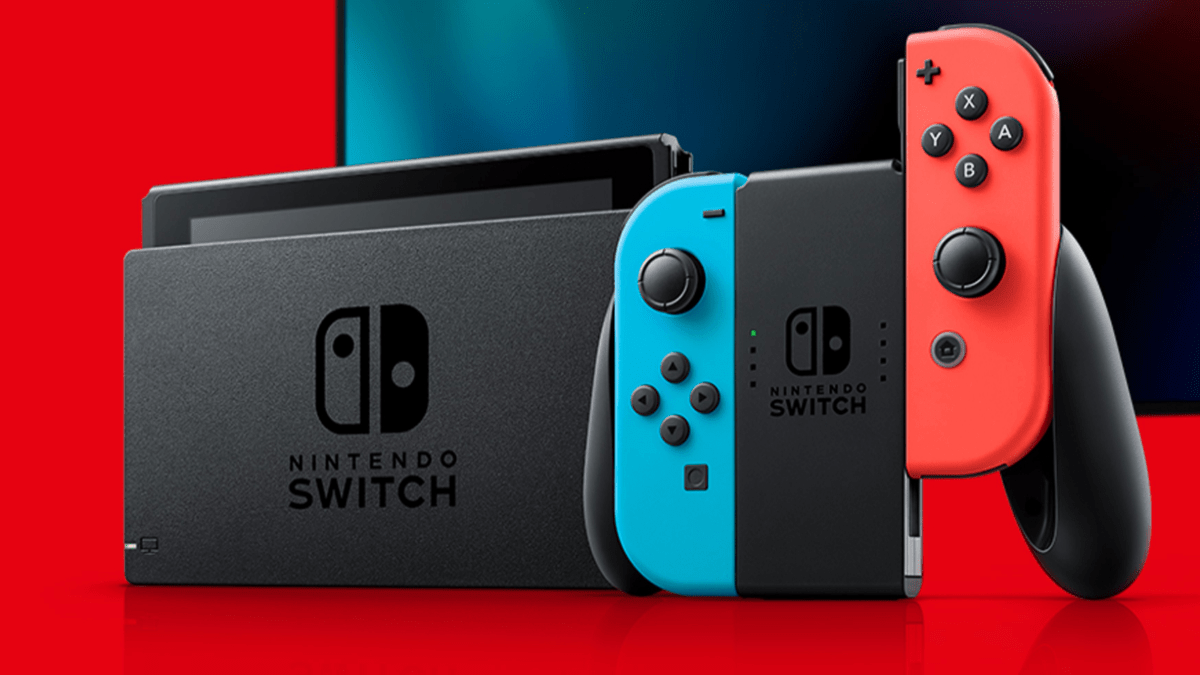
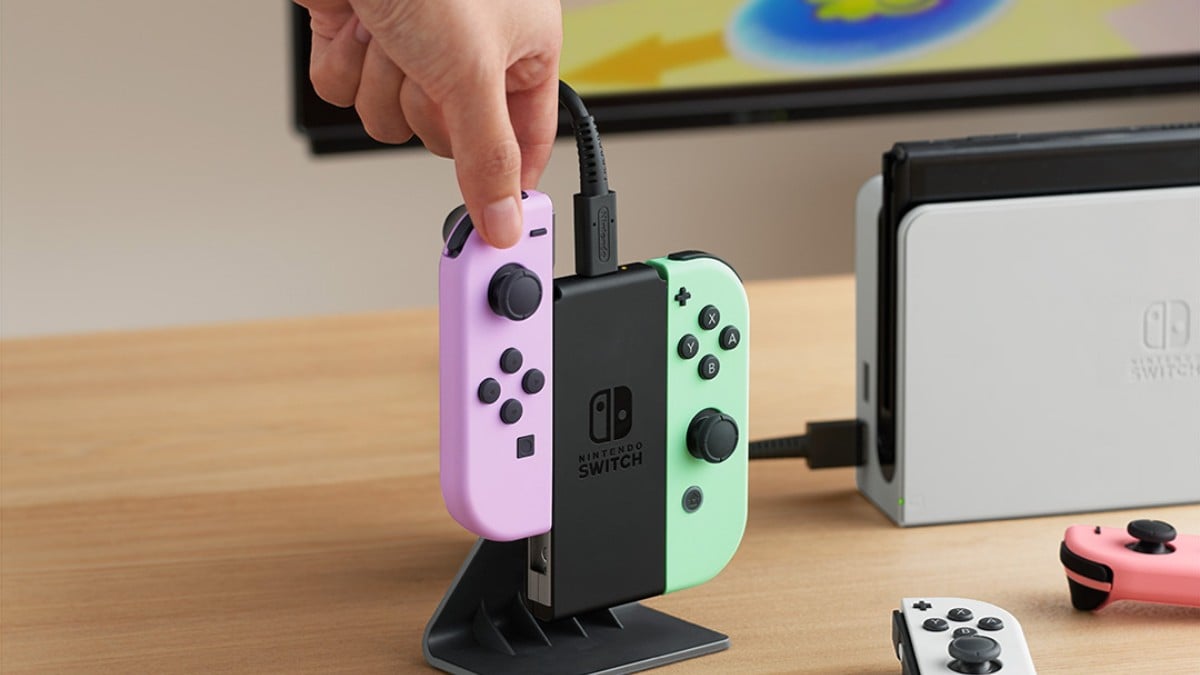

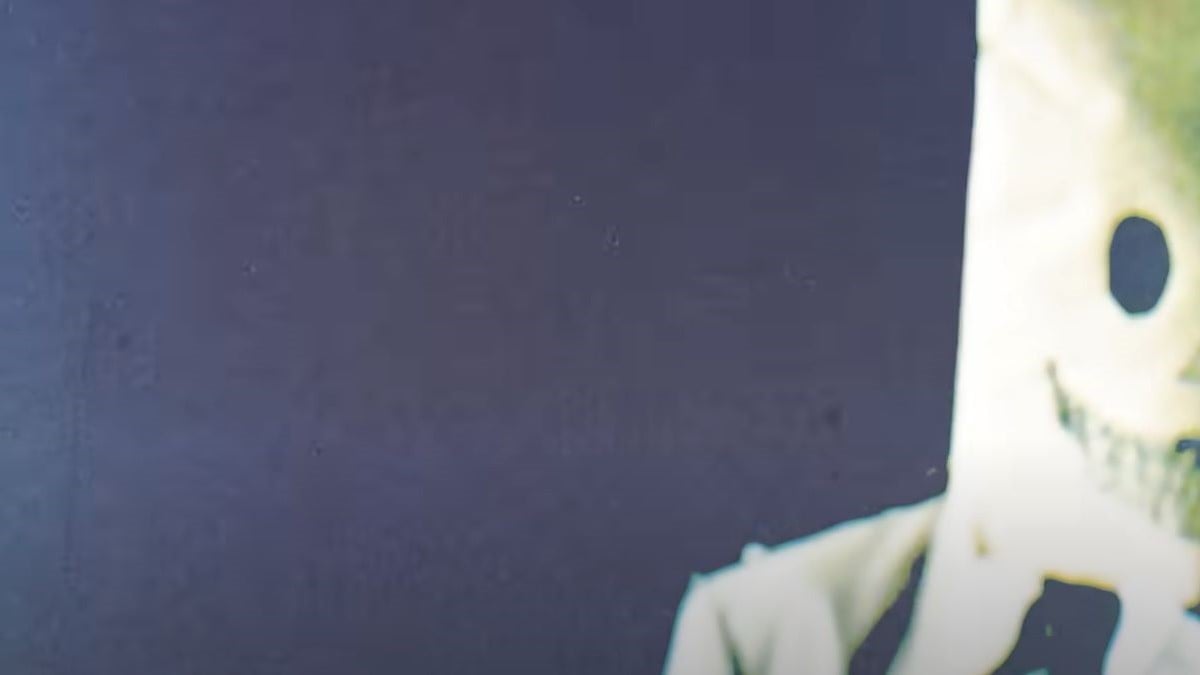
Published: Feb 2, 2022 10:00 am